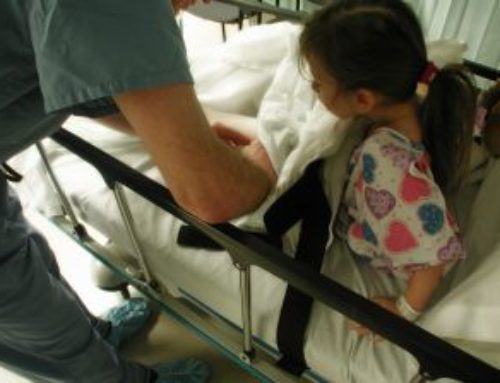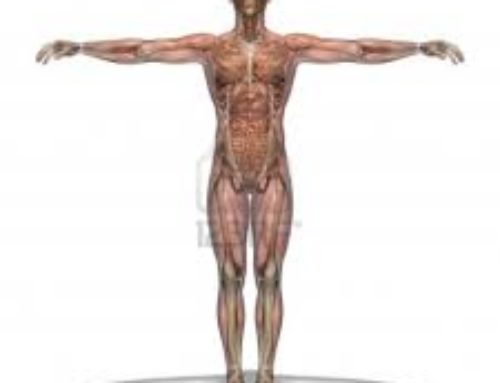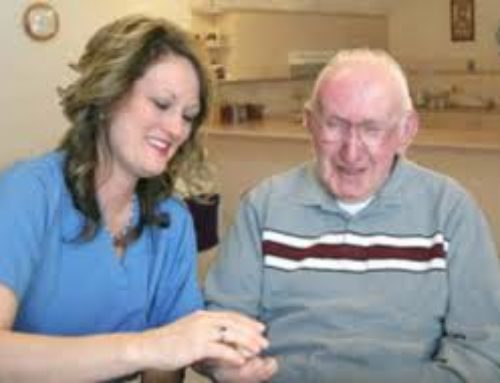
Introduction:
Atrial Fibrillation can be referred to as the abnormal beat or rhythm of the atrium (the upper chambers of the heart). It is one of the most common types of arrhythmias. An arrhythmia is simply an abnormal beat or impulse that originates outside the SA-node. The SA or sinoatrial node is known as the hearts real pacemaker. It is where impulses are the quickest at 60-80 beats per minute. It is located in the upper right quadrant of the heart, in the right atrium. Abnormal electrical signals that cause atrial fibrillation often originate in the left pulmonary veins rather than the sinoatrial node causing irregularities in the pattern of the heart depolarizing.
Atrial Fibrillation is classified by a disordered rate of the natural rhythm of the heart, generally as quick as 40 to 180 beats per minute. This causes the heart to inadequately depolarize. It is common for the condition to fluctuate between Atrial Flutter and atrial fibrillation. Atrial Flutter is different primarily because the rhythms are quick with an active atrial rate of 180 to 350 beats per minute however it is a rapid but regular rhythm which differs to the anarchic rhythm of atrial fibrillation. It is common for people who develop atrial flutter for it to transcend to fibrillation.
The chances of this condition increases with age and with reference to recent research it is present in 10% of a population over the ages of 80 years and is significantly uncommon in people aged 30 years or less.
In atrial fibrillation, because of the irregularity of the beats the upper chambers of the heart are unable to completely empty into the ventricles (the lower chambers of the heart). This poses a risk of blood pooling or clot formation and has been known to be the cause of stroke in some patients.
This condition is not usually a life threatening arrhythmia but can have a serious effect on cardiac output. Cardiac output is the volume of blood ejected from the ventricle per minute and can be equated using this formula CO= (stroke volume x heart rate). An adequate atrial contraction is important to left ventricular filling particularly during exercise, when the bodies demand for blood and oxygen is greater. The decrease in cardiac output signifies the loss of an effective atrial pump because of the rapid, irregular ventricular contraction which can lead to abnormally low blood pressure, termed hypotension and pulmonary congestion. These disorganized contractions also increases the chances of thrombus (clot) formation promoting the chances of stroke.
Causes:
Atrial fibrillation is commonly associated with:
· Coronary heart disease CAD
· Ischemic heart disease
· Myocardial Infarction or heart attacks
· Rheumatic heart disease whereby the heart valves are damaged by rheumatic fever
· Hyperthyroidism- an over active thyroid glad secreting the hormone thyroxine in excess of the bodies needs.
· Myocarditis which is the inflammation or necrosis (cell death) of the myocardium (heart muscle tissue).
· Hypertension which is the clinical name for high blood pressure
· Alcohol intoxication
· Excess caffeine intake
· Pulmonary disease
· Intrathoracic Infections such as pneumonia
· Viral infections
· Sleep apnea which is pauses in breath during sleep.
The hearts normal electric conduction system is precise and regulated. In atrial fibrillation the electrical impulses are overloaded between the atrium and the ventricles (AV- atrioventricular node). The result causes the atrium to quiver and beat quicker and consequently speeding up the ventricular rate. The normal range for the heart is between 60 and 100 beats per minute.
Atrial fibrillation can also occur without subsequent heart symptoms and is termed “lone” atrial fibrillation and the causes for this type is not completely understood nor is it prone to serious complications that are common for standard cases of atrial fibrillation.
Signs and Symptoms:
Unlike other cardiac disease and disorders, atrial fibrillation signs and symptoms vary from person to person. A few of the common symptoms are listed bellow:
Syncope: medical term for fainting
Dyspnea: shortness of breath or pain breathing.
Angina: Chest pain
Dizziness
Racing heartbeat
Sweating
Difficulty during simple exercise, such as walking or going up a flight of stairs
Feeling weak
Anxiety and Fear
Some patients have been known to identify exactly when their heart starts to beat quicker or flutter. Some may not experience this.
Diagnosis:
After a patient history has been obtained a physical exam will be conducted. This usually includes the physician examining the chest and chest sounds, breathing and the patient’s reflexes. All these related to possible signs and symptoms of atrial fibrillation.
Electrocardiogram ECG: Can be used to obtain a diagnosis for this condition. It is a device that records the electrical activity of the heart from different axes, using surface electrodes placed on the skin to produce a wave like image. It is broken up into different waves that signify the depolarization of different areas of the heart. The 12-lead ECG looks at electrical activity of the heart from 12 different views in two different planes.
A typical reading for atria fibrillation will show an irregular rhythm, the absence of a P-wave (which symbolizes atrial depolarization or the electrical activity in that area), no evidence of a PR-interval (which signifies electrical movement through the AV-junction) and the QRS complex on the reading, which identifies ventricular depolarization, will appear normal.
Echocardiogram: Is a technique whereby the use of a microphone like device, which allows the sound wave of the heart to be captured. The sound waves then generate images which relate to the valves and chambers of the heart. The beating of the atrium can clearly be seen on a cardiac echo.
Electrophysiology EP testing: This procedure involves a catheter to be inserted into the vessels and fed to a specific location within the heart. The beats and rhythms of the heart can then be clearly identified and mapped.
Stress Test: It is common for cardiac symptoms to worsen during moderate or high work loads/exercise levels. This test involves the patient to increase the work of the heart naturally using a treadmill or bicycle and the heart activity along with blood pressure are monitored. If the patient is unable to perform exercise the heart can be synthetically induced to beat as if it were exercising with the use of drugs.
Blood Testes: These are used to identify the presence of hyperthyroidism or other blood related conditions that could potentially be responsible for atrial fibrillation.
Complications:
The most common complication associated with atrial fibrillation is stroke. Because the heart is beating irregularly and the filling and emptying of the heart chambers is compromised in this condition, turbulent blood flow through these areas and also vessels around can be affected. A chance of a blood clot due to turbulent blood flow becomes a potential risk. If the clot is blocking a vessel in the brain a stroke is the result.
The worsening of angina is rare but also a factor that leads to the complication of this condition. Different heart conditions, such as cardiomyopathies (inflammation of the heart muscle and a weakening of its walls) are rare but have been known to present in cases of atrial fibrillation.
Treatment:
The primary treatment for atrial fibrillation is the administration of drugs, primarily calcium channel blockers and beta blockers such as Verapamil. This drugs help to decrease ventricular rate. Cardioversion is occasionally used for specific circumstances and is a term that describes restoring the heart to a normally beating pattern.
Anticoagulant drugs are also given to reduce the chances of clot formation and ultimately reduce the chances of a stroke. Bleeding is a complication of using anticoagulants. It can be fatal if not treated.
Surgical procedures used to treat the condition do not preserve the function of the atrium they act only to try and rectify the impulse to a more normal rhythm. A surgical treatment known as the “maze procedure” is used by making tiny incisions in an attempt to avoid excessive impulses through the atria this procedure is known to correct the function of the atrium.
Depending on the condition of the patient, other medications for blood pressure, hyperthyroidisms and so on are used to assist the treatment. New surgical treatments are also being investigated and could be a treatment in the future.
Prevention:
It is hard to specifically prevent atrial fibrillation. However a number of prevention initiatives can be taken to avoid heart disease and other conditions that would contribute to the worsening of an arrhythmia.
- Quit smoking
- Reduce the amount of alcohol, caffeine and sugar in the diet.
- Exercising regularly promotes your circulation
- A healthy diet to maintain a healthy weight
- Take medication as prescribed
- Do not ignore symptoms that may seem unusual
Maintaining lifestyle is crucial for a healthy heart. Taking care of your body with exercise and diet will maintain your circulation and keep the risk of heart disease low. Reducing the stress on your heart will reduce the chances of developing heart disorders such as atrial fibrillation.






Leave A Comment